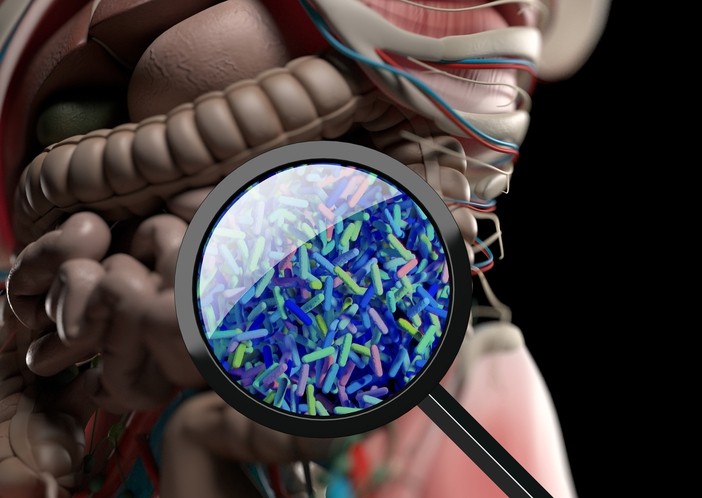Large study illuminates the diets linked with a healthy microbiome

It is well known that dietary choices have a large influence on the composition and function of our gut microbiota. It has been shown that high intake of fiber and substitution of saturated fatty acids (SFAs) with polyunsaturated fatty acids (PUFAs) are health protective factors.
Promising results have also been observed for associations between the gut microbiota and food items such as whole-grain products, berries, nuts, and legumes. However, components of a diet can have counteracting or synergistic effects with each other meaning research is needed which takes into account the entirety of the diet.
Previous studies to this effect have mainly focused on the Mediterranean diet or various plantbased diets in small and selected study samples. The authors of the current study say no studies focusing on the whole diet with large, population-based samples have been conducted to date.
In the current study, researchers from across the globe used the 2002 cohort of the National FINRISK Study (conducted by the Finnish Institute for Health and Welfare every five years until 2012) consisting of 8738 individuals (aged 25–74 years) to examine the associations between the gut microbiota and consumption of food items recommended to be part of a healthy diet in a cross-sectional setting, in a large, Finnish, population-based study sample.
The main objective was to assess whether healthy food choices are related to gut microbiota composition within samples (alpha diversity) and between samples (beta diversity). They also assessed key bacterial taxa that have been previously identified as SCFA producers and their associations with healthy food choices. Finally, they performed a pathway analysis through Kyoto Encyclopedia of Genes and Genomes orthology (KO) groups to uncover the functional potential of the microbiota and how it associates with healthy food choices.
They found that healthy food choices were associated with a richer and compositionally distinct microbiota and that dietary fiber is among the most significant dietary influencers of the gut microbiota.
What's more, the levels of most commonly known SCFA producing species, Faecalibacterium prausnitzii, Akkermansia muciniphila, and Roseburia intestinalis, were all significantly elevated in individuals with a higher HFC score in this study. These associations were accompanied by enrichment of enzymes involved in the SCFA metabolism, as well. These findings indicate that healthy dietary choices are associated with a human gut microbiota that possesses a greater potential for SCFA synthesis.
The team say the correlation between red meat consumption and an unhealthy microbiome composition was particularly notable.
"The associations between red and processed meat products and the gut microbiome cannot be ignored either. The fact that diminished use of red and processed meat products correlated strongly in the same direction with other healthy components in our dbRDA indicates that increased usage of red and processed meat is associated with the microbiota composition in an opposite manner to that of a healthy diet. This is not surprising given that low levels of fiber and increased usage of red meat products have been linked repeatedly with dysbiosis of the microbiota and colorectal cancer.
"The HFC score is also associated negatively with enzymes involved in the metabolism of taurine, a major constituent of bile. This hints at diminished exposure to bile acids of the gut microbiota in individuals who have a healthier diet, which is possibly due to diminished use of red and processed meat products. Secondary bile acids produced by the microbiota are known contributors to the colorectal cancer risk. Notably, in our study, enzymes for the amino acid metabolism and the sulfur relay system were also negatively associated with the HFC score."
The study
FINRISK 2002 included a questionnaire, a health examination, and a stool sample. Habitual diet was assessed using a food propensity questionnaire (FPQ). A healthy food choices (HFC) score was formed by choosing and summing FPQ responses to food items that are recommended in the Nordic Nutrition Recommendations dietary guidelines as part of a healthy diet. Food items chosen to be components of the score were fiber-rich breads; vegetables (including beans and lentils); fruits; berries; fresh, nonsweetened berry and fruit juices; fish; poultry; low-fat cheeses; salad dressings and oils; and nuts and seeds. The HFC score effectively acts as an indicator for an omnivorous Nordic diet rich in plants, fiber, and PUFA.
All analyses were adjusted for age, sex, BMI, smoking, and use of potentially microbiota altering medication. Interaction effects of the HFC score with sex and age were not statistically significant, and so were excluded from the final analyses.
Source: The American Journal of Clinical Nutrition
Koponen, K. K., et al
"Associations of healthy food choices with gut microbiota profiles"





